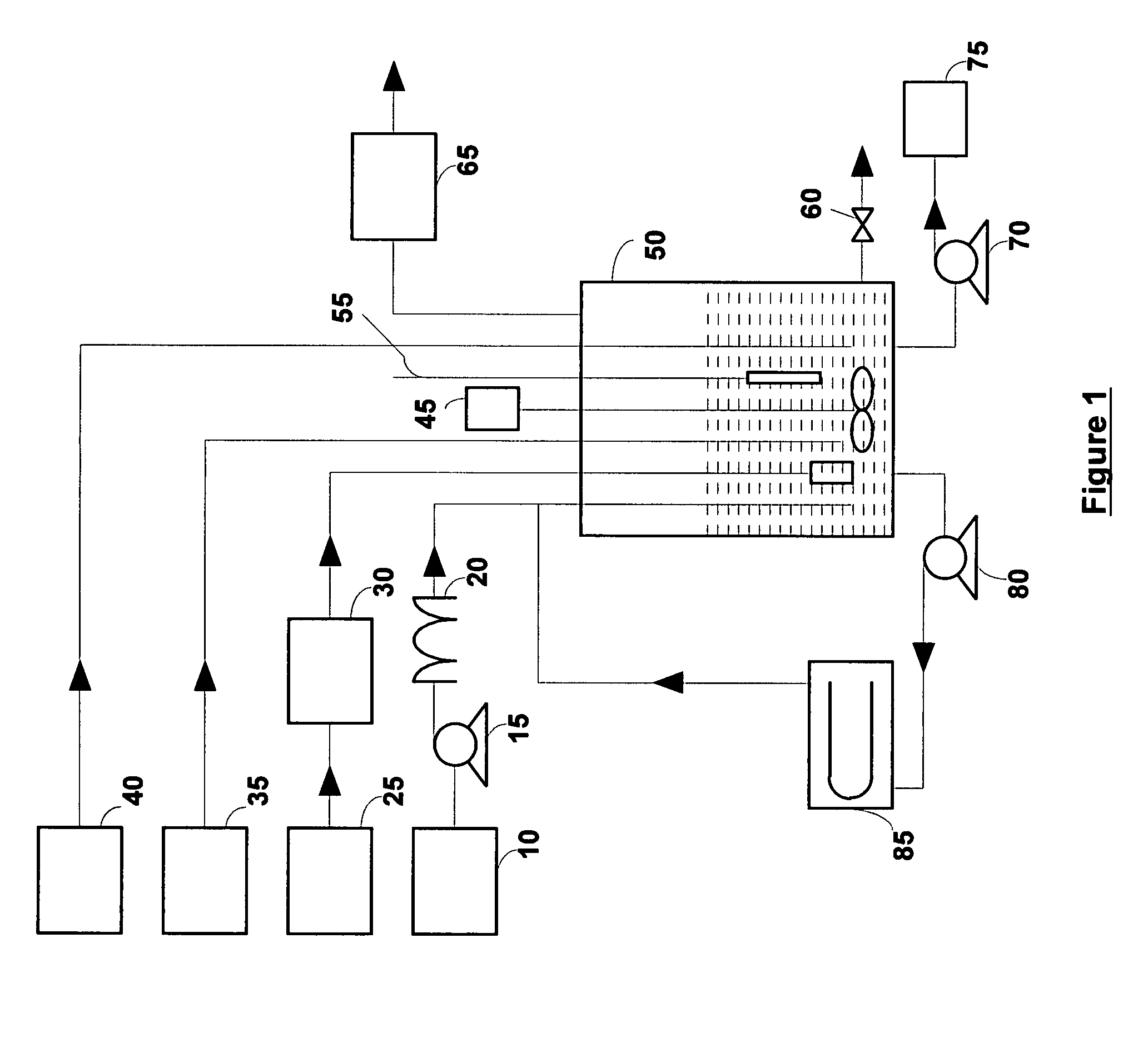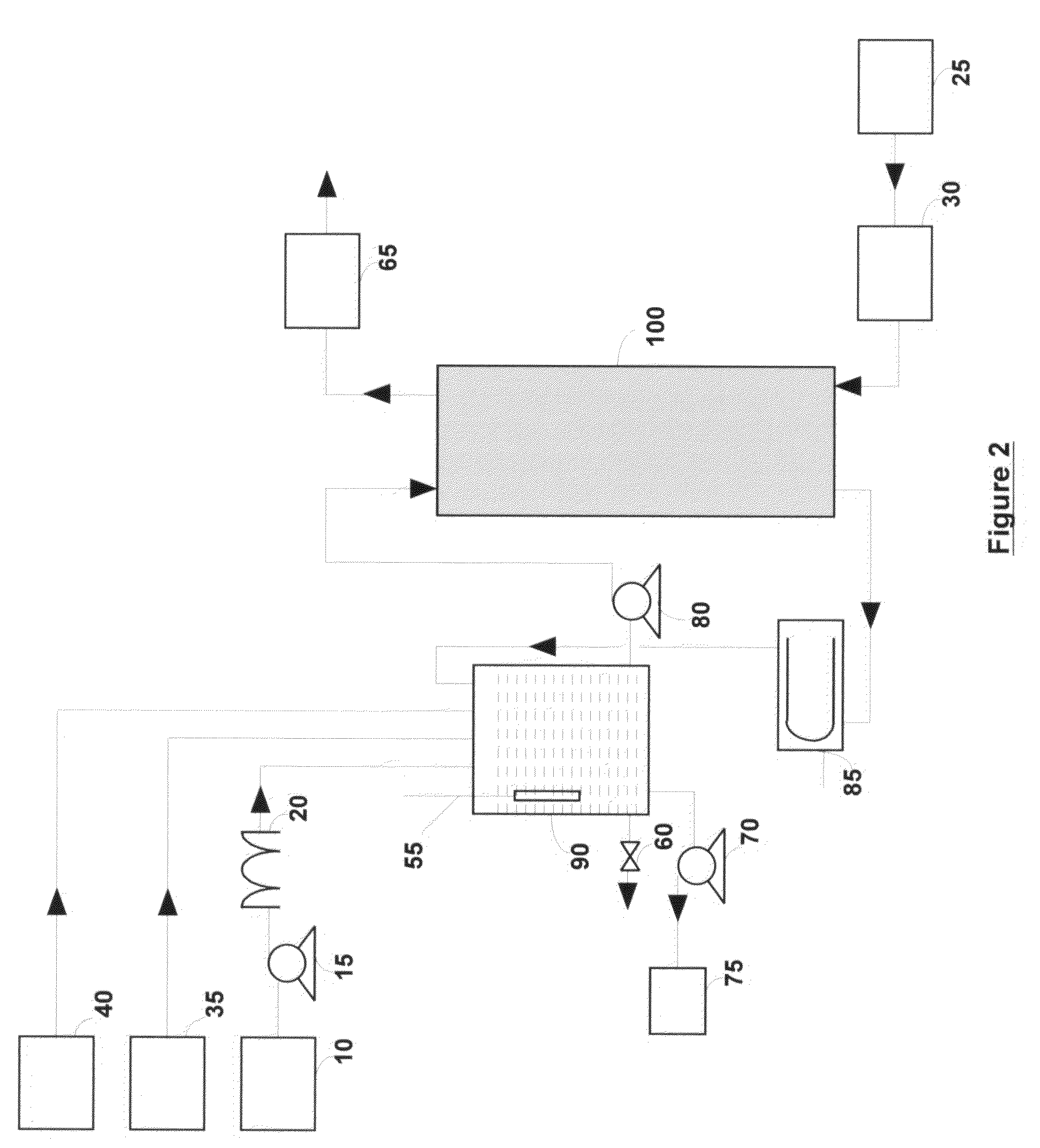Detoxification of chemical agents
- Summary
- Abstract
- Description
- Claims
- Application Information
AI Technical Summary
Benefits of technology
Problems solved by technology
Method used
Image
Examples
example 1
[0050]A 400 ml solution containing 0.1% malathion by volume (0.8 ml of Spectracide brand malathion containing 50% malathion) was vigorously stirred in a 500 ml reactor. An oxygen-ozone mixture containing about 10% ozone by weight was bubbled into the reactor at a rate of 0.4 normal liters / min (normal conditions refer to 0° C. and 1 atmosphere). The reaction was monitored by taking the samples periodically and monitoring the pH of the reaction. The reaction products were analyzed using a Hitachi HPLC (with L-4200H UV-VIS detector) containing a Varian Pursuit XRs 5u C18 column (250×4.6 mm). More than 10 reaction products were seen during the reaction period of four hours. Two of the reaction products were identified as malaoxon (about 70 times more toxic than malathion) and diethyl succinate. Malaoxon was seen after 15 minutes, reached its peak around 3 hours and had a concentration of about ⅓ its peak concentration after 4 hours. Diethyl succinate was seen after 45 minutes, reached i...
example 2
[0052]The same mixture as in Example 1 (0.1% malathion by volume) was vigorously stirred in the reactor. Again an oxygen-ozone mixture containing about 10% ozone by weight was bubbled into the reactor at a rate of 0.4 normal liters / min. Two separate experiments were run. In one case, the pH of the reaction mixture was maintained at close to about 10.0 using 6M NaOH, and in another case the pH of the reaction mixture was maintained at close to about 12.0 using 6M NaOH solution. Again the reaction products were analyzed using the Hitachi HPLC.
[0053]In both the experiments, a smaller number of reaction products than in Example 1 were formed. The concentrations of the degradation products such as malaoxon were generally less than 1 / 10th of those in Example 1.
[0054]For the pH 10 case, malaoxon concentration peaked around 70 minutes and it was removed to below detection limit in less than four hours. Malathion was completely removed in less than three hours. After four hours a single peak...
example 3
[0057]A 400 ml of 0.1% malathion by volume solution was made by vigorously stirring 0.8 ml of Spectracide brand malathion containing 50% malathion and 3% hydrogen peroxide (CVS brand) in the reactor. Again an oxygen-ozone mixture containing about 10% ozone by weight was bubbled into the reactor at a rate of 0.4 normal liters / min. The pH of the reaction mixture was maintained at close to about 10.0 using 6M NaOH and the reaction products were analyzed using the Hitachi HPLC.
[0058]In this experiment, malathion was removed to below detection limit in less than twenty minutes, malaoxon was removed to below detection limit in less than 80 minutes and a single peak corresponding to the oxalate salt was obtained in less than 150 minutes.
[0059]Comparison of this Example with the pH 10 case of Example 2 illustrates that further increase in the concentration of hydroxyl radicals (through use of hydrogen peroxide) and synergistic combination of neutralization and oxidation with hydroxyl radica...
PUM
 Login to View More
Login to View More Abstract
Description
Claims
Application Information
 Login to View More
Login to View More - R&D
- Intellectual Property
- Life Sciences
- Materials
- Tech Scout
- Unparalleled Data Quality
- Higher Quality Content
- 60% Fewer Hallucinations
Browse by: Latest US Patents, China's latest patents, Technical Efficacy Thesaurus, Application Domain, Technology Topic, Popular Technical Reports.
© 2025 PatSnap. All rights reserved.Legal|Privacy policy|Modern Slavery Act Transparency Statement|Sitemap|About US| Contact US: help@patsnap.com


